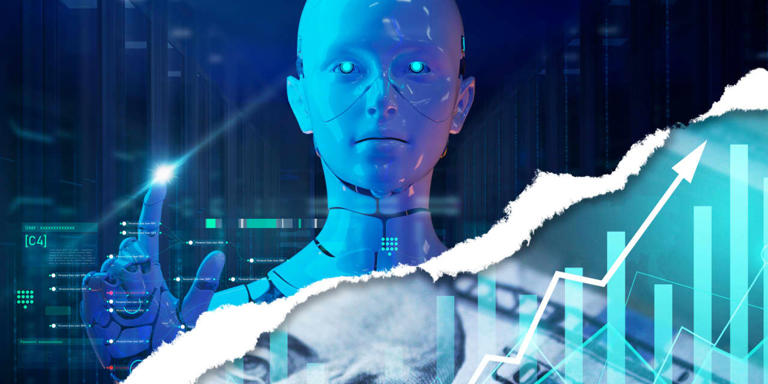Artificial intelligence (AI) has emerged as a transformative force in the U.S. stock market, profoundly impacting companies like Nvidia Corp., Microsoft Corp., and Apple Inc. These tech giants have experienced remarkable stock price increases, contributing to the broader market’s ascent to record highs. Neil Shearing, chief economist at Capital Economics, has forecasted that AI’s momentum could potentially propel the S&P 500 index to reach 7,000 by 2025. However, amid this optimism, Shearing also draws parallels to historical market bubbles, cautioning about the risks associated with inflated valuations driven by AI enthusiasm.
Shearing’s analysis underscores the potential of AI to revolutionize various sectors, from healthcare to finance, by enhancing efficiency, automation, and decision-making processes. Yet, he points out that the full economic impact of AI may unfold over a longer timeline compared to past technological revolutions. For instance, the steam locomotive took decades to achieve widespread adoption, whereas information and communication technologies of the 1980s and 1990s quickly transformed industries within five to ten years.
The economic benefits of these earlier technologies became evident in the mid-1990s, leading to accelerated productivity growth. Shearing suggests that AI’s integration into the economy may follow a similar trajectory but with unique challenges and opportunities. Despite AI’s potential to boost corporate profits and operational efficiencies, its adoption across industries and realization of widespread productivity gains could take several years, if not decades.
Shearing’s cautionary note about the “Gartner Hype Cycle” highlights a common pattern where new technologies undergo phases of exaggerated expectations, followed by disillusionment before reaching widespread adoption and tangible benefits. This cycle suggests that current market enthusiasm for AI may be nearing a peak, prompting periods of market volatility and adjustments as expectations align with actual technological advancements and economic impacts.
Recent volatility in Nvidia’s stock price serves as a case in point, with sharp declines followed by recoveries reflecting uncertainties and market corrections amid high expectations for AI-related growth. Investors keen on capitalizing on AI’s potential may face challenges navigating market fluctuations and assessing the long-term sustainability of AI-driven valuations.
Looking ahead, Shearing anticipates a phase of skepticism and adjustment in market sentiment as the AI revolution matures. This period could bring more nuanced evaluations of AI’s economic contributions and differentiation between companies that successfully leverage AI versus those that struggle to adapt. It also underscores the importance of technological development, regulatory frameworks, and societal acceptance in shaping AI’s trajectory and market outcomes.
Despite the current optimism surrounding AI, Shearing’s analysis encourages a balanced perspective, urging investors and stakeholders to consider both the transformative potential and inherent uncertainties of AI technologies. While AI continues to drive innovation and market growth in sectors ranging from autonomous vehicles to personalized medicine, its full impact on economic growth, job markets, and societal dynamics will unfold gradually and require careful monitoring and adaptation.
In conclusion, AI’s influence on the stock market reflects a dynamic interplay between technological innovation, market dynamics, and investor sentiment. As AI technologies evolve and integrate deeper into global economies, the path to realizing their full potential will involve navigating through periods of optimism, skepticism, and eventual realization of economic benefits. Investors and market participants poised to navigate these shifts with informed strategies and prudent risk management are likely to capture opportunities amid the evolving landscape of AI-driven growth and disruption.
